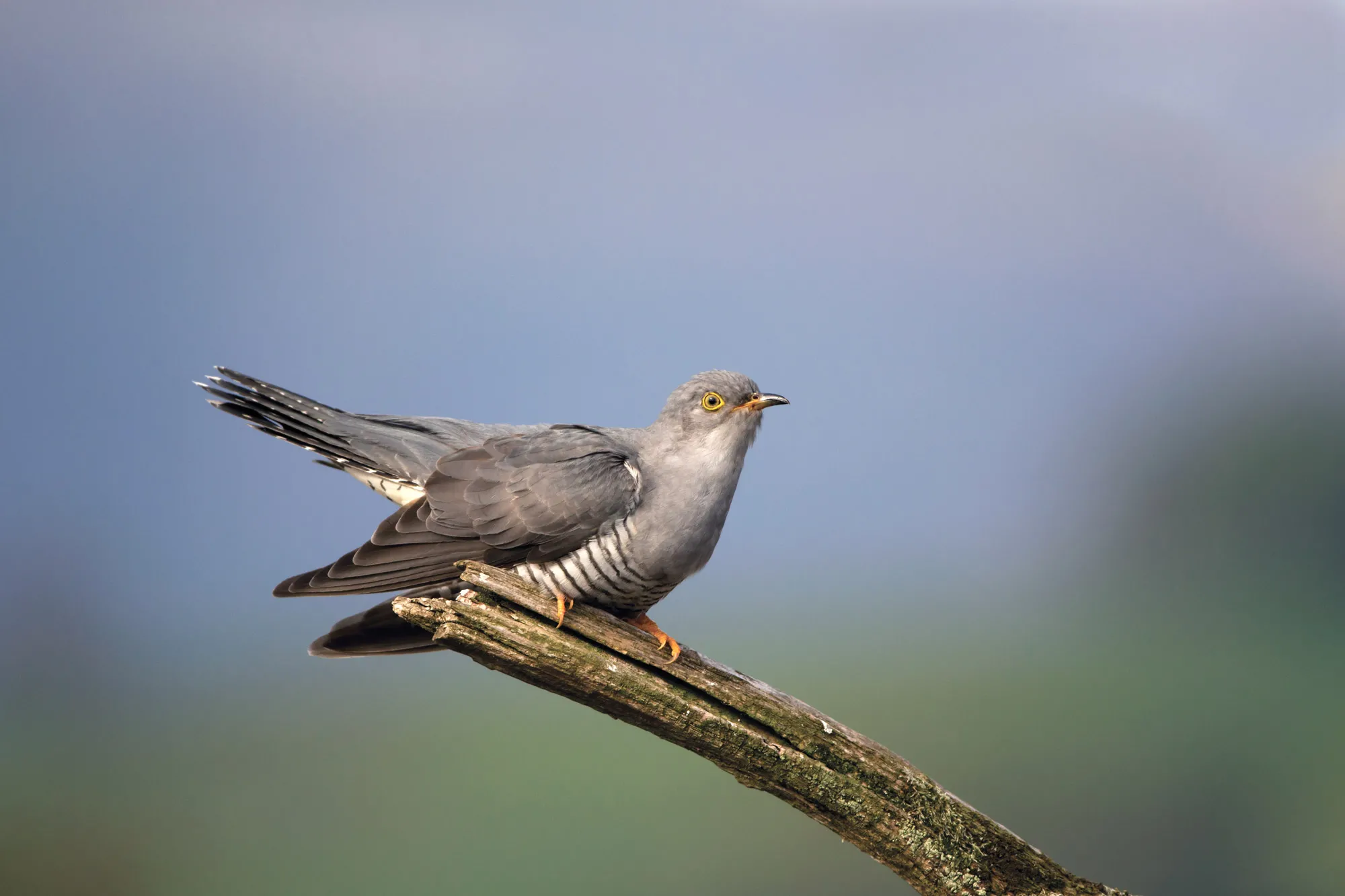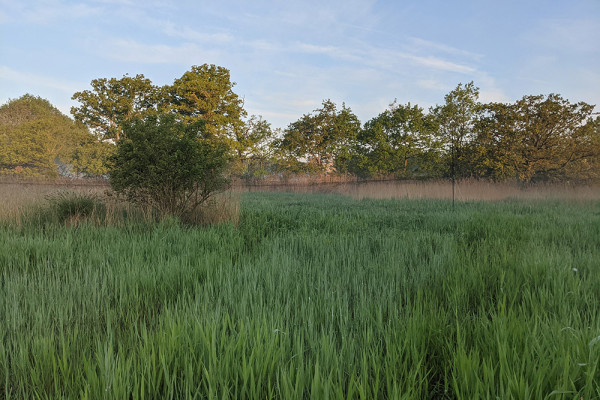Several studies from BTO and elsewhere have revealed alarming declines in species that breed in the UK and spend our winter months in Africa. However, these declines are less severe in migratory species that have adjusted the timing of their arrival back to their UK breeding grounds to keep pace with ever earlier northern hemisphere springs. But one species that has not significantly shifted the timing of its spring migration forward is the Cuckoo, the iconic harbinger of spring.

UK springs are starting earlier as the climate warms, with bud burst and the emergence of invertebrates such as caterpillars that eat this young vegetation happening earlier too. These invertebrates are a vital and ephemeral food source for breeding birds, so migratory species that have not advanced their migrations and subsequent breeding accordingly risk missing out.
One species that has not significantly shifted the timing of its spring migration forward is the Cuckoo, the iconic harbinger of spring. Previous BTO work has shown that the advance in the Cuckoo’s arrival has been smaller than that of many other species, and it has undergone a substantial population decline, in England especially.
In general, both migratory and resident species that have not advanced their breeding have undergone greater population declines than others, but there’s been limited evidence linking this to a reduction in breeding success in these species. This suggests that other demographic pathways, such as adult survival, may be important. Understanding why some migratory species have not advanced their arrival, and what the consequences of this are outside of the breeding season, is therefore vital for understanding population declines and helping us work out the best ways to help.
Investigating the drivers of the Cuckoo’s migratory schedule
Using data from 87 adult male Cuckoos tagged as part of BTO’s Cuckoo Tracking Project, we looked at which events across their annual migratory schedule were most important in determining when birds arrived back to the breeding grounds. We also looked at whether migratory timing affected mortality risk at different migratory stages. And to help us understand variation in timing across the annual cycle, we examined whether timing was consistent between individuals.
We found that the timing of departure from the pre-Sahara crossing stopover in West Africa in spring is the most important factor in determining when Cuckoos arrive back to the UK. Furthermore, both the high level of synchrony across the population at this stage and relatively modest levels of consistent timing differences between individuals suggest that environmental conditions constrain when birds can depart from this stopover.
Our tracking work has revealed that Cuckoos use this stopover in March and April each year. In this part of Africa, rains arrive at this time every year, moving up from the southern hemisphere in association with a system known as the Intertropical Convergence Zone. These rains bring about a flush of invertebrate prey, which migratory species such as the Cuckoo rely on to fuel their northward journeys. This study is the first to find that departure from a stopover site limits a land bird species’ arrival to its breeding grounds across multiple years.
In addition to departure from West Africa, we found that spring arrival on the breeding grounds was determined to lesser, but important, extent by migration speed during the northward journey across Europe, as well as the timing of Cuckoos’ arrival south of the Sahara the previous autumn. The latter is surprising given that earlier research has shown timing differences between individuals are largely reset during the winter period – there is usually only a limited carry-over effect of timing from autumn to spring migration.

Why can’t Cuckoos change their clocks?
Previous research looking at patterns across many species has shown that, in general, the timing of departure from the wintering grounds is the major determinant of variation in when migratory birds arrive back to their breeding sites. The timing of this departure also has a higher level of consistent differences between individuals than other events. This indicates a greater direct control by internal migration programmes. Hence, an advance in the timing of departure from wintering sites provides a potential evolutionary mechanism via which spring arrival at breeding grounds can also be advanced.
Our results show, however, that this is not an option for UK Cuckoos. The timing of their departure from their wintering grounds in the Congo rainforest zone has little effect on when they arrive back to their breeding sites; in fact, all other things being equal, birds that depart their wintering grounds later arrive back a little earlier.
These results help us to understand both why the phenological response (the timing of annual cycle events) to climate change is so limited in some species, and why migratory species which travel further are less likely to be able to advance their spring arrival timing than ones that make shorter journeys. Similar results might be found for some other very long-distance migrants which, like the Cuckoo, migrate to the southern hemisphere for the midwinter period and rely on stopovers in the northern tropics to prepare for crossing the Sahara in spring. Overall, the seasonality of sites used across the annual cycle is likely to be more important than their position in the annual cycle in determining their relationship to breeding grounds arrival and the potential for its advance.
Why is it important to understand what drives birds’ migratory behaviour?
By looking at how mortality risk varied with timing across the annual cycle, we were able to gain some important insights into how these limitations to migratory change can impact individual birds, and therefore potentially populations.
In periods following the migration stages that were most important in determining the timing of arrival on breeding grounds, early birds were more likely to die than later ones. This suggests that, to try to gain the benefits of early breeding grounds arrival, such as claiming the best breeding territories, birds suffer increased mortality risk. In other words, there is a trade-off between survival and the benefits of early arrival, perhaps due to birds migrating with less on-board fuel than they otherwise would. Such risks may become more necessary as birds try to keep up with climate change on the breeding grounds.
The fact that we found that migration timing didn’t reset during the midwinter period, and that part of post-breeding migration is included in the periods when birds appear to be exposing themselves to these risks, suggests that in the case of UK Cuckoos, all ecological levers are being pulled in an attempt to advance spring arrival. The resulting increased mortality may form part of the demographic mechanisms linking failure to advance spring arrival to population declines.
Using our research to help birds adapt to global change
Not only do these results help in understanding why some species are not keeping pace with ever earlier springs and advancing their arrival to the breeding grounds, and how this might impact their populations, it also helps to show how we might help these birds cope better with the demands of global change.
We can identify pinch points in the annual cycle that impact spring arrival, and where early birds are at increased risk of mortality. The stresses these birds are under can potentially be alleviated by improving habitat quality at stopovers, to increase fattening rates and reduce costly trade-offs between survival and reproduction. The most important places to concentrate flyway restoration efforts are the stopovers used in spring and autumn to prepare for the Sahara crossings and, to lesser extent, the areas used to recover from the Sahara crossings and migration across Europe in spring.
As we also found that birds that were late leaving the breeding grounds were at greater risk of dying than those leaving earlier, suggesting they are energetically limited at this point, provision of better-quality habitat on the breeding grounds is also a priority.

Cuckoos in our past and in our future
These results shed light on one of the oldest mysteries in folklore – what determines when Cuckoos arrive back at their breeding sites, and whether they really are a sign that spring is here...Ultimately, they could help us reverse the Cuckoo’s population decline in the UK.
These results show that in fact, events occurring more than three thousand miles away are more important in determining overall variation in Cuckoo arrival back to the UK than events closer to home. But when focusing specifically on whether individual birds are early or late relative to their own schedule in different years, it seems that conditions in Europe are much more important. So, as Cuckoos are very faithful to their breeding sites, the old adage that Cuckoos are a sign that spring is on the way may well contain some truth from a local perspective after all.
In our future work, we will need to assess exactly how the departure of Cuckoos from critical stopover sites is impacted by the combination of climatic and habitat factors birds experience. This will give us a better idea of how each currently contributes to the timing and success of migrations, and how best we might use habitat restoration to help birds improve migratory performance, and ultimately, reverse their population declines in the UK.
